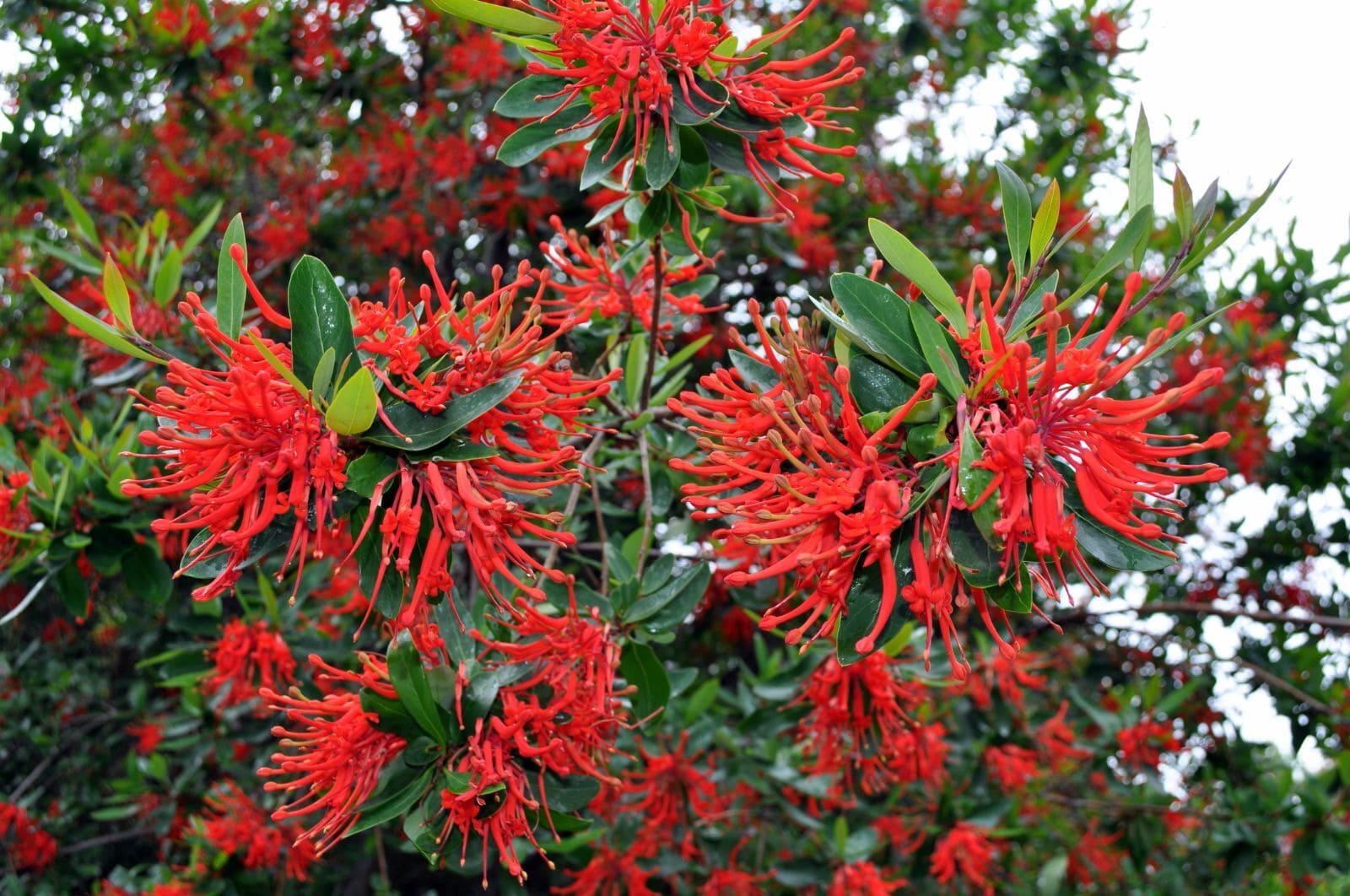
Embothrium, often called the Chilean Firebush, is a striking plant native to South America. Known for its vibrant red flowers, this evergreen tree can brighten any landscape. But what makes Embothrium so special? Its unique adaptations to survive in harsh environments and its role in local ecosystems are just a few reasons. This plant not only adds beauty but also supports wildlife, providing nectar for birds and insects. Whether you're a gardening enthusiast or just curious about nature, learning about Embothrium can be both fun and informative. Ready to dive into some fascinating facts about this fiery flora? Let's get started!
What is Embothrium?
Embothrium, commonly known as Chilean firetree or Chilean firebush, is a fascinating plant native to South America. Its vibrant red flowers and unique characteristics make it a subject of interest for botanists and plant enthusiasts alike. Let's dive into some intriguing facts about this remarkable species.
Origins and Habitat
Embothrium has a rich history and specific environmental preferences that contribute to its unique characteristics.
-
Native to Chile and Argentina: Embothrium grows naturally in the temperate rainforests of southern Chile and Argentina. These regions provide the ideal climate and soil conditions for the plant to thrive.
-
Prefers Moist, Well-Drained Soil: This plant flourishes in moist, well-drained soils, often found in forested areas. It does not tolerate waterlogged conditions, which can harm its roots.
-
Grows at Various Altitudes: Embothrium can be found at altitudes ranging from sea level up to 1,500 meters. This adaptability allows it to occupy diverse habitats within its native range.
Physical Characteristics
The physical traits of Embothrium are as striking as they are functional, aiding in its survival and reproduction.
-
Bright Red Flowers: The most distinctive feature of Embothrium is its bright red, tubular flowers. These flowers attract pollinators, such as hummingbirds, which are essential for the plant's reproduction.
-
Evergreen Leaves: Embothrium has evergreen leaves, meaning they remain green and functional throughout the year. This trait helps the plant photosynthesize continuously, even in winter.
-
Height and Growth: This plant can grow up to 15 meters tall, although it often remains smaller in cultivation. Its height allows it to compete for sunlight in dense forests.
Ecological Role
Embothrium plays a significant role in its ecosystem, supporting various forms of wildlife and contributing to the health of its environment.
-
Pollinator Attraction: The bright red flowers of Embothrium are specifically adapted to attract hummingbirds, which are its primary pollinators. This mutualistic relationship benefits both the plant and the birds.
-
Supports Biodiversity: By providing nectar and habitat, Embothrium supports a wide range of insects and birds, contributing to the overall biodiversity of its ecosystem.
-
Soil Stabilization: The roots of Embothrium help stabilize the soil, preventing erosion in the forested areas where it grows. This function is crucial for maintaining the health of its native habitats.
Cultural and Practical Uses
Beyond its ecological importance, Embothrium has various uses and significance in human culture.
-
Ornamental Plant: Due to its striking appearance, Embothrium is often used as an ornamental plant in gardens and parks. Its vibrant flowers add a splash of color to any landscape.
-
Medicinal Uses: In traditional medicine, parts of the Embothrium plant have been used to treat various ailments, although scientific evidence supporting these uses is limited.
-
Wood Utilization: The wood of Embothrium is sometimes used for making small tools and crafts. It is valued for its durability and workability.
Conservation Status
Understanding the conservation status of Embothrium is crucial for ensuring its survival in the wild.
-
Not Endangered: Currently, Embothrium is not listed as an endangered species. However, habitat destruction and climate change could pose future threats to its populations.
-
Protected Areas: Many of the regions where Embothrium grows are protected national parks and reserves. These areas help safeguard the plant's natural habitat from human encroachment.
-
Cultivation Efforts: Efforts are being made to cultivate Embothrium in botanical gardens and arboretums around the world. These initiatives help preserve genetic diversity and raise awareness about the species.
Interesting Tidbits
Here are some additional fun facts about Embothrium that highlight its unique nature.
-
Fire-Resistant Bark: Embothrium has a fire-resistant bark, which helps it survive wildfires that occasionally sweep through its native habitats. This adaptation is vital for its long-term survival.
-
Long Lifespan: This plant can live for several decades, with some specimens known to be over 50 years old. Its longevity allows it to play a sustained role in its ecosystem.
-
Symbol of Chilean Flora: Embothrium is considered a symbol of Chilean flora due to its striking beauty and ecological importance. It is often featured in cultural representations of the country's natural heritage.
The Beauty of Embothrium
Embothrium, often called the Chilean Firebush, stands out with its vibrant red flowers and unique adaptability. This plant thrives in diverse climates, from the cool, moist regions of Chile to gardens worldwide. Its striking appearance isn't just for show; it plays a crucial role in local ecosystems, attracting pollinators like bees and hummingbirds.
Beyond its ecological importance, Embothrium has cultural significance. Indigenous communities have long used it for medicinal purposes, showcasing its versatility. Gardeners and botanists alike appreciate its resilience and beauty, making it a popular choice for ornamental planting.
Understanding Embothrium's role in nature and culture highlights the interconnectedness of our world. This plant isn't just a pretty face; it's a testament to nature's ingenuity and adaptability. Next time you see those fiery blooms, remember the rich history and ecological value they represent.
Was this page helpful?
Our commitment to delivering trustworthy and engaging content is at the heart of what we do. Each fact on our site is contributed by real users like you, bringing a wealth of diverse insights and information. To ensure the highest standards of accuracy and reliability, our dedicated editors meticulously review each submission. This process guarantees that the facts we share are not only fascinating but also credible. Trust in our commitment to quality and authenticity as you explore and learn with us.


